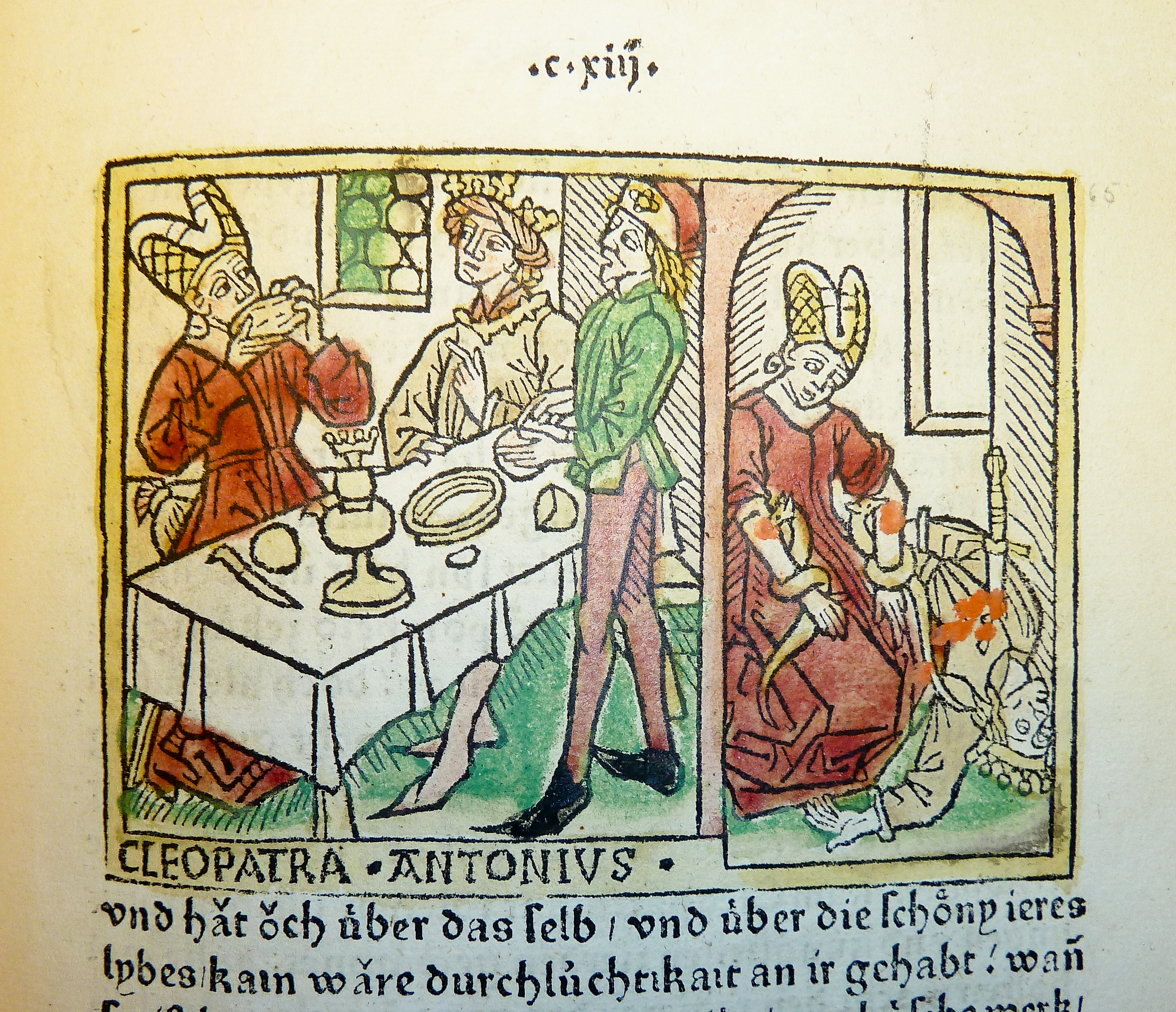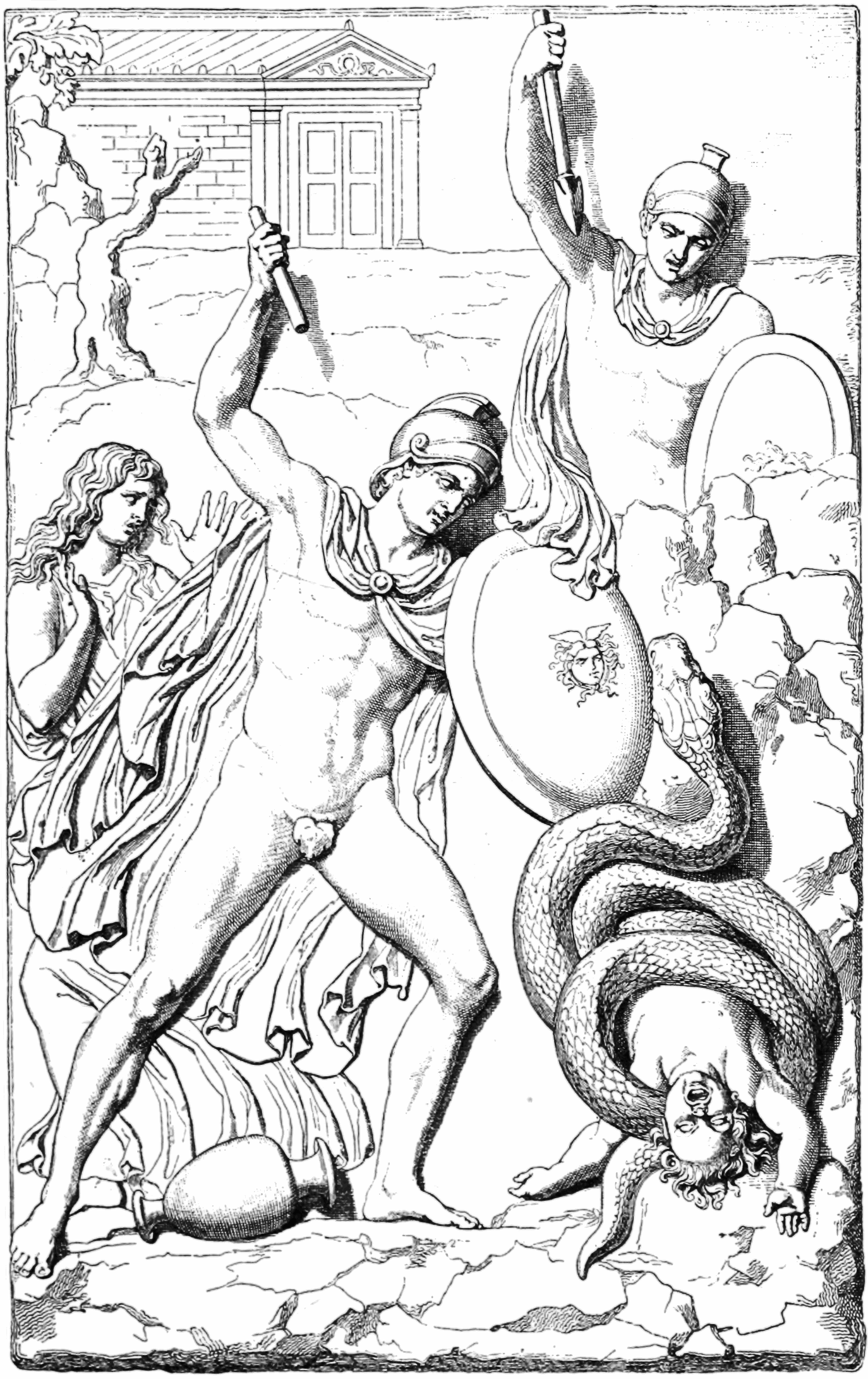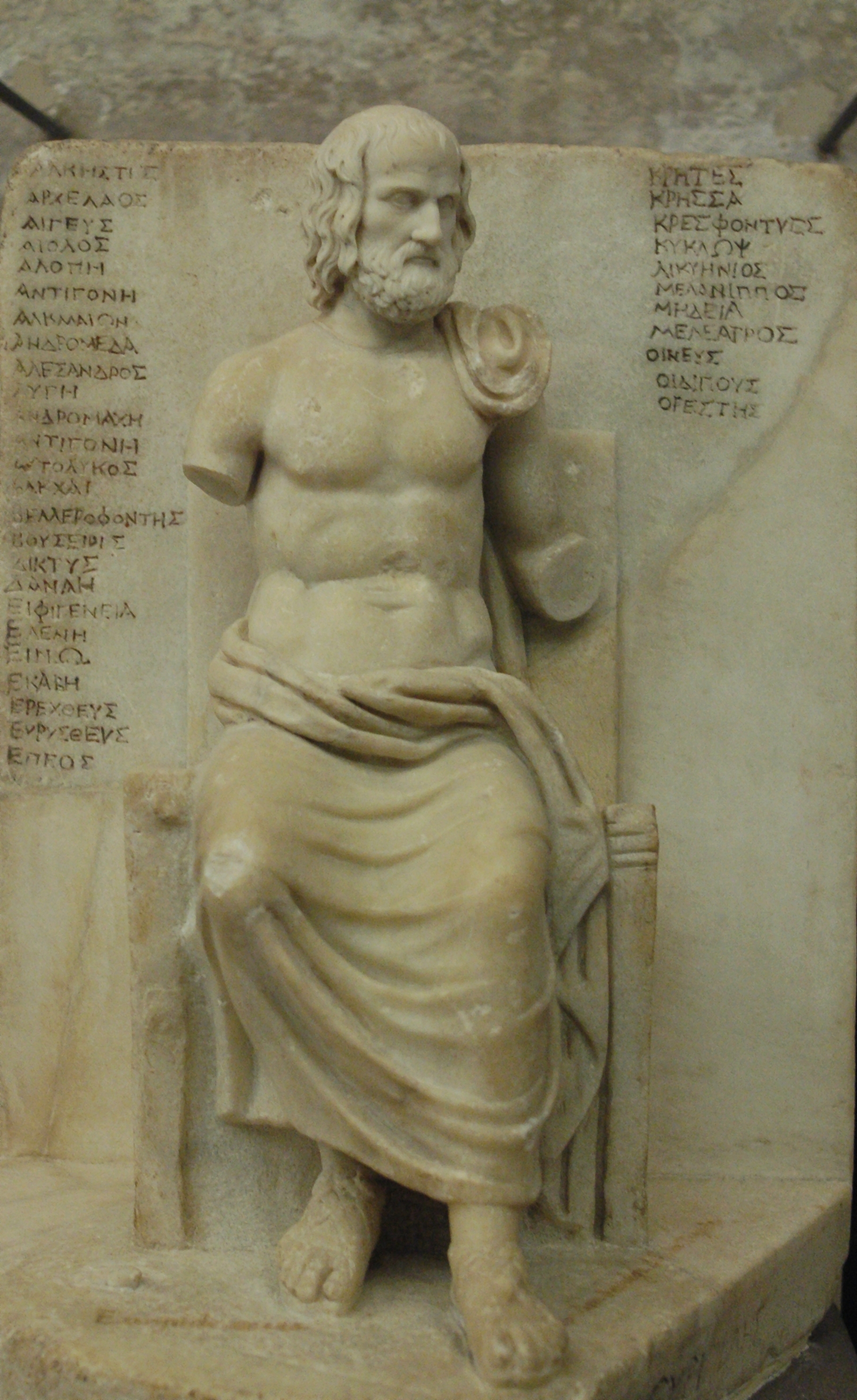|
Argea
In Greek mythology, Argia or Argea (Ancient Greek: Ἀργεία ''Argeia'') was a daughter of King Adrastus of Argos, and of Amphithea, daughter of Pronax. She was married to Polynices, the exiled king of Thebes, and bore him three sons: Thersander, Adrastus, and Timeas. Mythology When Oedipus had died at Thebes, Argia came with others to the funeral of Oedipus, her father-in-law.''Scholiast on Homer, Il. xxiii. 679;'Hesiod''. Catalogue of Women Fragment 24''./ref> Middle Age tradition She is remembered in '' De Mulieribus Claris'', a collection of biographies of historical and mythological women by the Florentine author Giovanni Boccaccio, composed in 136162. It is notable as the first collection devoted exclusively to biographies of women in Western literature. In Dante's '' Inferno'', she is found in Limbo. See also * Phoenician Women * Hyginus, who in his ''Fabulae'' (Latin) calls her Argia. * Robert Graves in his popular ''The Greek Myths'' (106c) prefe ... [...More Info...] [...Related Items...] OR: [Wikipedia] [Google] [Baidu] |
Argos, Peloponnese
Argos (; ; ) is a city and former municipality in Argolis, Peloponnese (region), Peloponnese, Greece and is one of the List of oldest continuously inhabited cities, oldest continuously inhabited cities in the world, and the oldest in Europe. It is the largest city in Argolis and a major center in the same prefecture, having nearly twice the population of the prefectural capital, Nafplio. Since the 2011 local government reform it has been part of the municipality of Argos-Mykines, of which it is a municipal unit. The municipal unit has an area of 138.138 km2. It is from Nafplion, which was its historic harbour. A settlement of great antiquity, Argos has been continuously inhabited as at least a substantial village for the past 7,000 years. A resident of the city of Argos is known as an Argive ( , ; ). However, this term is also used to refer to those ancient Greeks generally who assaulted the city of Troy during the Trojan War; the term is more widely applied by the Hom ... [...More Info...] [...Related Items...] OR: [Wikipedia] [Google] [Baidu] |
De Mulieribus Claris
''De Mulieribus Claris'' or ''De Claris Mulieribus'' (Latin for "Concerning Famous Women") is a collection of biographies of historical and mythological women by the Florentine author Giovanni Boccaccio, composed in Latin prose in 1361–1362. It is the first collection devoted exclusively to biographies of women in post-ancient Western literature. At the same time as he was writing ''On Famous Women'', Boccaccio also compiled a collection of biographies of famous men,'' De Casibus Virorum Illustrium'' (''On the Fates of Famous Men''). The famous women *1. Eve, the first woman in the Bible *2. Semiramis, queen of the Assyrians *3. Opis, wife of Saturn *4. Juno, goddess of the Kingdoms *5. Ceres, goddess of the harvest and queen of Sicily *6. Minerva, Roman goddess of wisdom, justice, law, victory, and the sponsor of arts, trade, and strategy *7. Venus, queen of Cyprus *8. Isis, queen and goddess of Egypt *9. Europa, queen of Crete *10. Libya, queen of Libya *11 and 1 ... [...More Info...] [...Related Items...] OR: [Wikipedia] [Google] [Baidu] |
Argia BnF Français 599 Fol
''Argia'' is a genus of damselfly, damselflies of the family Coenagrionidae and of the subfamily Argiinae. It is a diverse genus which contains about 114 species and many more to be described. It is also the largest genus in Argiinae. They are found in the Western Hemisphere. They are commonly known as ''dancers''. Although the genus name comes from , dancers are quite active and alert damselflies. The bluer ''Argia'' species may be confused with ''Enallagma'' species. Characteristics This genus of damselflies are known as dancers because of the distinctive jerky form of flight they use which contrasts with the straightforward direct flight of Coenagrion, bluets, Ischnura, forktails and other pond damselflies. They are usually to be seen in the open where they catch flying insects on the wing rather than flying about among vegetation picking off sedentary Predation, prey items. They tend to land and perch flat on the ground, logs and rocks. When perched, they usually hold their w ... [...More Info...] [...Related Items...] OR: [Wikipedia] [Google] [Baidu] |
Woodcut Illustration Of Argia And Polyneices - Penn Provenance Project
Woodcut is a relief printing technique in printmaking. An artist carves an image into the surface of a block of wood—typically with Chisel#Gouge, gouges—leaving the printing parts level with the surface while removing the non-printing parts. Areas that the artist cuts away carry no ink, while characters or images at surface level carry the ink to produce the print. The block is cut along the wood grain (unlike wood engraving, where the block is cut in the end-grain). The surface is covered with ink by rolling over the surface with an ink-covered roller (brayer), leaving ink upon the flat surface but not in the non-printing areas. Multiple colours can be printed by keying the paper to a frame around the woodblocks (using a different block for each colour). The art of carving the woodcut can be called ''xylography'', but this is rarely used in English for images alone, although that term and ''xylographic'' are used in connection with block books, which are small books contain ... [...More Info...] [...Related Items...] OR: [Wikipedia] [Google] [Baidu] |
Princesses In Greek Mythology
Princess is a title used by a female member of a regnant monarch's family or by a female ruler of a principality. The male equivalent is a prince (from Latin ''princeps'', meaning principal citizen). Most often, the term has been used for the consort of a prince, or for the daughter of a monarch. A crown princess can be the heir apparent to the throne or the spouse of the heir apparent. Princess as a substantive title Some princesses are reigning monarchs of principalities. There have been fewer instances of reigning princesses than reigning princes, as most principalities excluded women from inheriting the throne. An example of a princess regnant is Constance of Antioch, princess regnant of Antioch in the 12th century. Since the president of France, an office for which women are eligible, is ''ex-officio'' a co-prince of Andorra, then Andorra could theoretically be jointly ruled by a princess. Princess as a courtesy title Descendants of monarchs For many centuries, the t ... [...More Info...] [...Related Items...] OR: [Wikipedia] [Google] [Baidu] |
Thebaid (Latin Poem)
The ''Thebaid'' (; ) is a Latin epic poem written by the Roman poet Statius. Published in the early 90s AD, it contains 9748 lines arranged in 12 books, and recounts the clash of two brothers, Eteocles and Polynices, over the throne of the Greek city of Thebes, Greece, Thebes. After Polynices is sent into exile, he forges an alliance of Seven against Thebes, seven Greek princes and embarks on a military campaign against his brother. Although its source material derives predominantly from the Ancient Greek literature, Greek literary tradition, the ''Thebaid'' has close ties with other Latin texts such as Virgil's ''Aeneid'' and Senecan tragedy, the tragedies of Seneca the Younger. The poem's central themes include the relationship between politics and the family, civil war, and the amoral acts to which it gives rise. Critics have also noted the poem's innovative depiction of Roman mythology. Following in the footsteps of Ovid, Ovid's ''Metamorphoses'', Statius used an episodic w ... [...More Info...] [...Related Items...] OR: [Wikipedia] [Google] [Baidu] |
Statius
Publius Papinius Statius (Greek language, Greek: Πόπλιος Παπίνιος Στάτιος; , ; ) was a Latin poetry, Latin poet of the 1st century CE. His surviving poetry includes an epic in twelve books, the ''Thebaid (Latin poem), Thebaid''; a collection of occasional poetry, the ''Silvae''; and an unfinished epic, the ''Achilleid''. He is also known for his appearance as a guide in the ''Purgatorio, Purgatory'' section of Dante Alighieri, Dante's epic poem, the ''Divine Comedy''. Life Family background The poet's father (whose name is unknown) was a native of Velia but later moved to Naples and spent time in Rome where he taught with marked success. From boyhood to adulthood, Statius's father proved himself a champion in the poetic contests at Naples in the Augustalia and in the Nemean, Pythian Games, Pythian, and Isthmian Games, Isthmian games, which served as important events to display poetic skill during the early empire. Statius declares in his lament for his fath ... [...More Info...] [...Related Items...] OR: [Wikipedia] [Google] [Baidu] |
Catalogue Of Women
The ''Catalogue of Women'' ()—also known as the ''Ehoiai '' (, )The Latin transliterations ''Eoeae'' and ''Ehoeae'' are also used (e.g. , ); see Catalogue of Women#Title and the ē' hoiē-formula, Title and the ''ē' hoiē''-formula, below. Though rare, ''Mulierum Catalogus'', the Latin translation of , might also be encountered (e.g. ). The work is commonly cited by the abbreviations ''Cat''., ''CW'' (occasionally ''HCW'') or ''GK'' (= ''Gynaikon Katalogos'').—is a Lost literary work, fragmentary Ancient Greek literature, Greek Epic poetry, epic poem that was attributed to Hesiod during antiquity. The "women" of the title were in fact heroines, many of whom lay with gods, bearing the heroes of Greek mythology to both divine and mortal paramours. In contrast with the focus upon narrative in the Homeric ''Iliad'' and ''Odyssey'', the ''Catalogue'' was structured around a vast system of genealogy, genealogies stemming from these unions and, in Martin Litchfield West, M. L. West' ... [...More Info...] [...Related Items...] OR: [Wikipedia] [Google] [Baidu] |
Euripides
Euripides () was a Greek tragedy, tragedian of classical Athens. Along with Aeschylus and Sophocles, he is one of the three ancient Greek tragedians for whom any plays have survived in full. Some ancient scholars attributed ninety-five plays to him, but the ''Suda'' says it was ninety-two at most. Of these, eighteen or nineteen have survived more or less complete (''Rhesus (play), Rhesus'' is suspect). There are many fragments (some substantial) of most of his other plays. More of his plays have survived intact than those of Aeschylus and Sophocles together, partly because his popularity grew as theirs declinedMoses Hadas, ''Ten Plays by Euripides'', Bantam Classic (2006), Introduction, p. ixhe became, in the Hellenistic Age, a cornerstone of ancient literary education, along with Homer, Demosthenes, and Menander.L.P.E.Parker, ''Euripides: Alcestis'', Oxford University Press (2007), Introduction p. lx Euripides is identified with theatrical innovations that have profoundly influ ... [...More Info...] [...Related Items...] OR: [Wikipedia] [Google] [Baidu] |
Robert Graves
Captain Robert von Ranke Graves (24 July 1895 – 7 December 1985) was an English poet, soldier, historical novelist and critic. His father was Alfred Perceval Graves, a celebrated Irish poet and figure in the Gaelic revival; they were both Celticists and students of Irish mythology Irish mythology is the body of myths indigenous to the island of Ireland. It was originally Oral tradition, passed down orally in the Prehistoric Ireland, prehistoric era. In the History of Ireland (795–1169), early medieval era, myths were .... Robert Graves produced more than 140 works in his lifetime. His poems, his translations and innovative analysis of the Greek myths, his memoir of his early life—including his role in World War I—''Good-Bye to All That'' (1929), and his speculative study of poetic inspiration ''The White Goddess'' have never been out of print. He was also a renowned short story writer, with stories such as "The Tenement" still being popular today. He ear ... [...More Info...] [...Related Items...] OR: [Wikipedia] [Google] [Baidu] |
Phoenician Women
''The Phoenician Women'' (, ''Phoinissai'') is a tragedy by Euripides, based on the same story as Aeschylus' play ''Seven Against Thebes''. It was presented along with the tragedies '' Hypsipyle'' and '' Antiope.'' With this trilogy, Euripides won the second prize. The title refers to the Greek chorus, which is composed of Phoenician women on their way to Delphi who are trapped in Thebes by the war. Unlike some of Euripides' other plays, the chorus does not play a significant role in the plot, but represents the innocent and neutral people who very often are found in the middle of war situations. Patriotism is a significant theme in the story, as Polynices talks a great deal about his love for the city of Thebes but has brought an army to destroy it; Creon is also forced to make a choice between saving the city and saving the life of his son. Plot The play opens with a summary of the story of Oedipus and its aftermath told by Jocasta, who in this version has not committed su ... [...More Info...] [...Related Items...] OR: [Wikipedia] [Google] [Baidu] |
Inferno (Dante)
''Inferno'' (; Italian for 'Hell') is the first part of Italian writer Dante Alighieri's 14th-century narrative poem ''The Divine Comedy'', followed by and . The ''Inferno'' describes the journey of a fictionalised version of Dante himself through Christian views on Hell, Hell, guided by the Ancient Rome, ancient Roman poet Virgil. In the poem, Hell is depicted as nine concentric circles of torment located within the Earth; it is the "realm[...] of those who have rejected spiritual values by yielding to bestial appetites or violence, or by perverting their human intellect to fraud or malice against their fellowmen". As an allegory, the ''Divine Comedy'' represents the journey of the soul toward God, with the ''Inferno'' describing the recognition and rejection of sin. Prelude to Hell Canto I The poem begins on the night of Maundy Thursday on March 24 (or April 7), 1300, shortly before the dawn of Good Friday. The narrator, Dante himself, is 35 years old, and thus "midway i ... [...More Info...] [...Related Items...] OR: [Wikipedia] [Google] [Baidu] |








